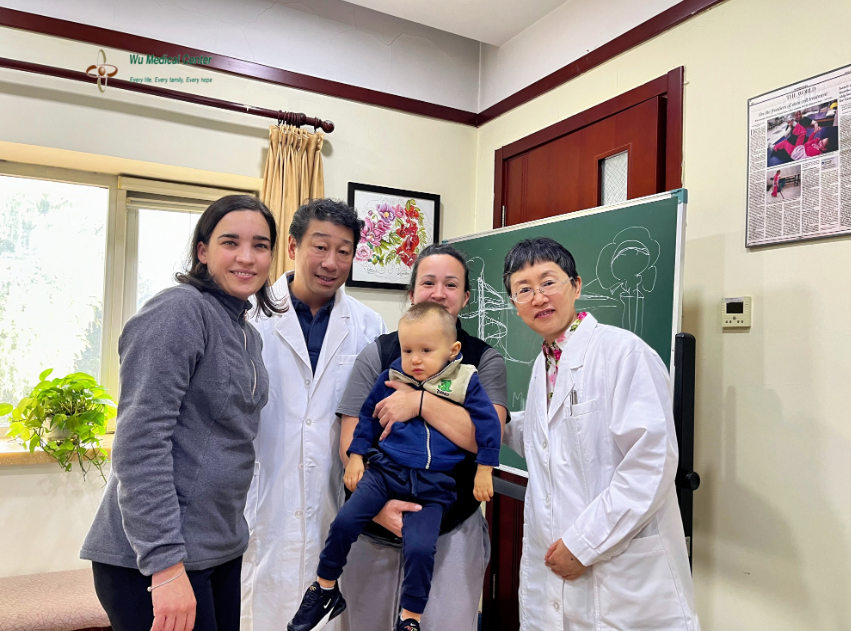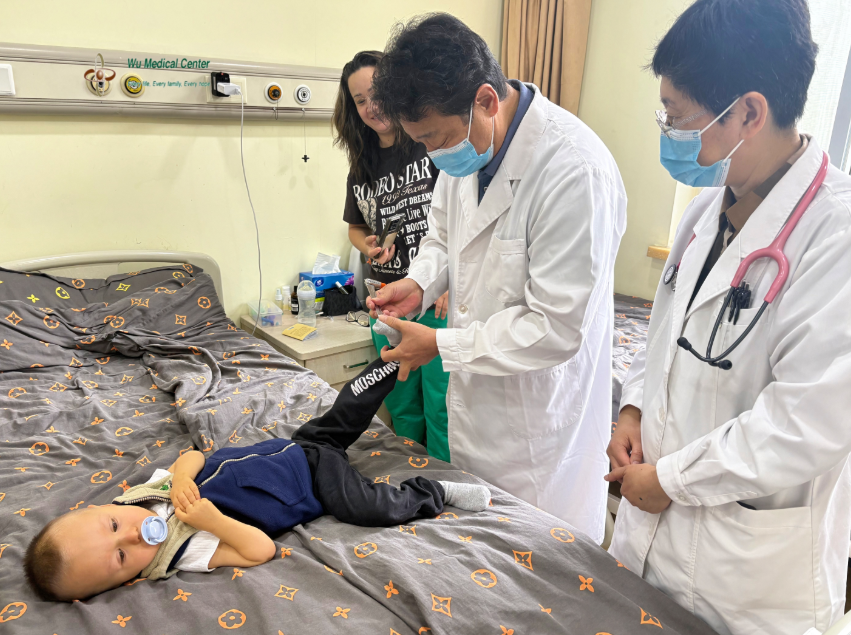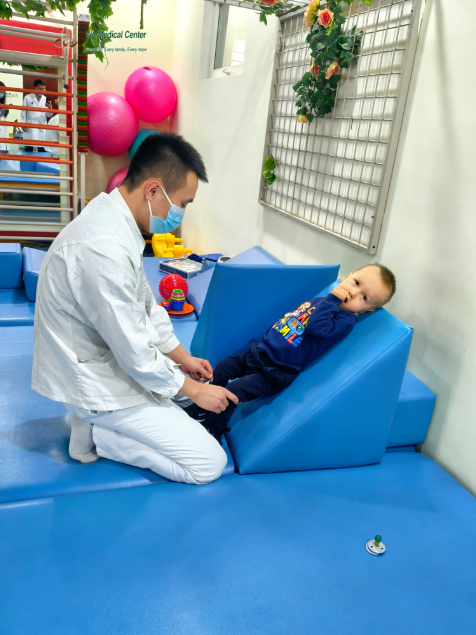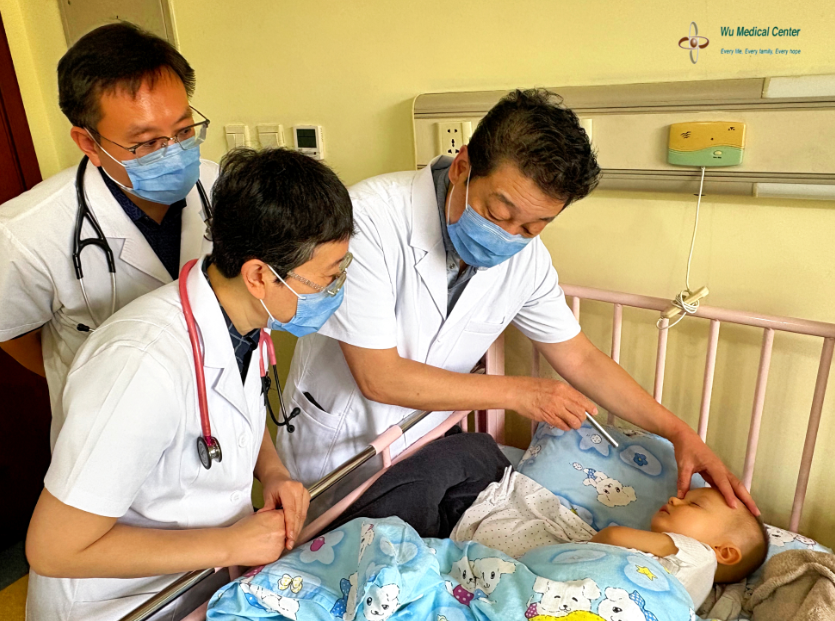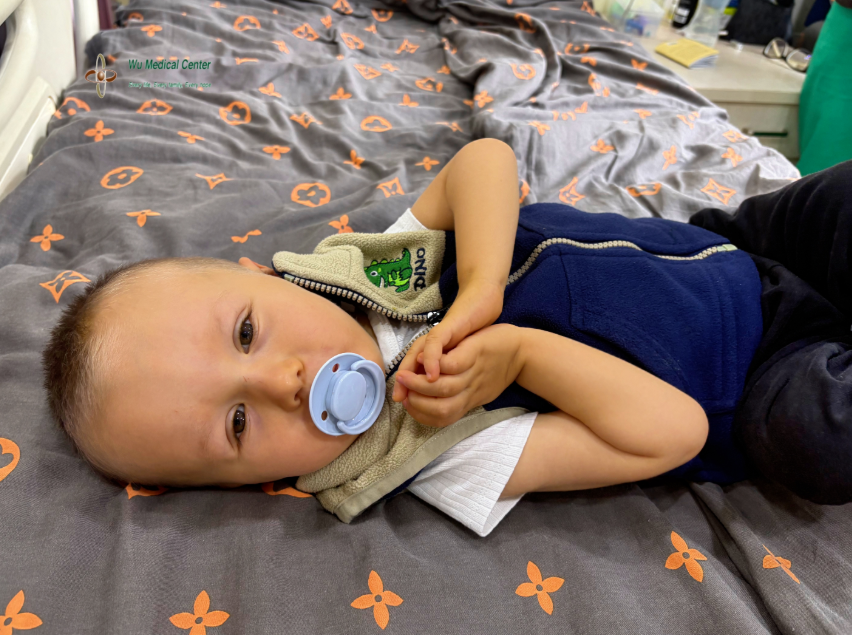Andrei Lung-Cerebral Palsy (STXBP1 Deficiency Syndrome)-Romanian
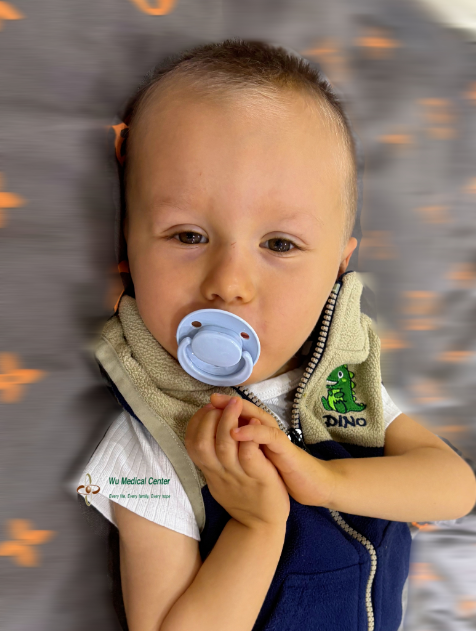 Patient Name: Andrei Lung
Patient Name: Andrei Lung
Gender: Male
Age: 2 years and 9 months
Nationality: Romanian
Diagnosis: Cerebral Palsy (STXBP1 Deficiency Syndrome)
Condition on Admission:
The child was a full-term birth. At 8 months old, the family noticed developmental impairments in motor and cognitive functions, and he was diagnosed with "STXBP1 Deficiency Syndrome" at a local hospital, without any special treatment. Currently, the child's height and weight were below those of normally developing children. He could not speak, could only lie on his back, could barely roll over to the right side, could not sit or crawl. His hands could be lifted and grasped, but there were occasional tremors in his limbs and neck. The muscle tone in his limbs and trunk was hypotonic with poor strength, more pronounced in the lower limbs. He was unable to cough and often experienced breathing difficulties. He had a poor response to the surrounding environment, could hardly understand commands, and had only a vague recognition of his name. He could slowly eat soft foods orally but occasionally choked when drinking water. During sleep, his left eye was inwardly deviated. An electroencephalogram (EEG) showed abnormal discharges. He had previously taken levetiracetam (exact dosage unknown), which had now been discontinued. The child had habitual dyspepsia with hard stools and took one capsule of a protease preparation daily. His daily sleep duration was approximately 14 hours.
Physical Examination on Admission:
The child's heart rate was 112 beats per minute with irregular rhythm. His height was 87 cm, and weight was 9.5 kg. There was no jaundice on the skin, and the pharynx was not congested. Breath sounds in both lungs were clear, with no dry or wet rales heard. Heart sounds were strong, with irregular rhythm, and no significant murmurs were detected in the auscultation zones of the heart valves. The abdomen was soft and non-tender, with the liver and spleen not palpable below the ribs. There was no edema in the lower limbs.
Neurological Examination:
The child was alert and responsive to changes in sound and light in the surrounding environment. He showed minimal crying or shouting and did not speak. Both pupils were equal, round, approximately 3 mm in diameter, and responded briskly to light, with no apparent nystagmus. His chewing and swallowing abilities were weak, and he could only eat small amounts of soft food. Muscle strength in both upper limbs was grade 3, and he could grasp without purpose with both hands; muscle strength in both lower limbs was grade 2, with minimal voluntary movement. His limbs exhibited hypotonia. The right tendon reflexes were lower than those on the left side. The sucking reflex was positive, as were the palmomental reflex and the grasp reflex. Hoffmann's sign was positive bilaterally, as was the Babinski sign on both sides. There were no signs of meningeal irritation.
Treatment Process:
The child was admitted with a clear diagnosis of "Cerebral Palsy (STXBP1 Deficiency Syndrome)." He was treated with neural stem cells, mesenchymal stem cells, and CAST therapy to increase the number of normal brain neurons, repair neural damage, improve cerebral blood circulation, regulate immunity, and nourish brain neurons, along with comprehensive rehabilitation therapy.
After Treatment:
The child's condition has improved compared to the time of admission. His excessive sleepiness has alleviated, with daily sleep now approximately 11 hours and more regular (9 hours at night and about 2 hours during the day). His spirit has significantly improved, with more smiles, more lively eye expressions, and increased eye and body interaction with the environment. The tremors in his lower limbs have disappeared. His ability to control his body has improved, allowing him to roll over to the right and left sides. His grasping ability has strengthened, and he holds the bottle more securely, able to resist some resistance. Purposeful movements have increased. When standing with the assistance of a 45-degree wedge, his leg support strength has improved, and stability has increased, allowing him to support himself for 3 seconds. His limb activity has become more flexible, and the irregular heartbeat has decreased.
